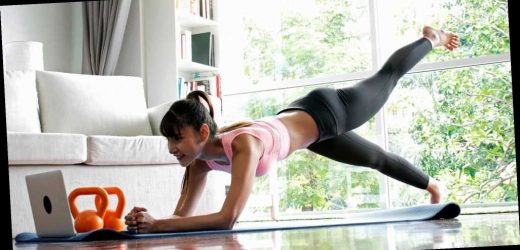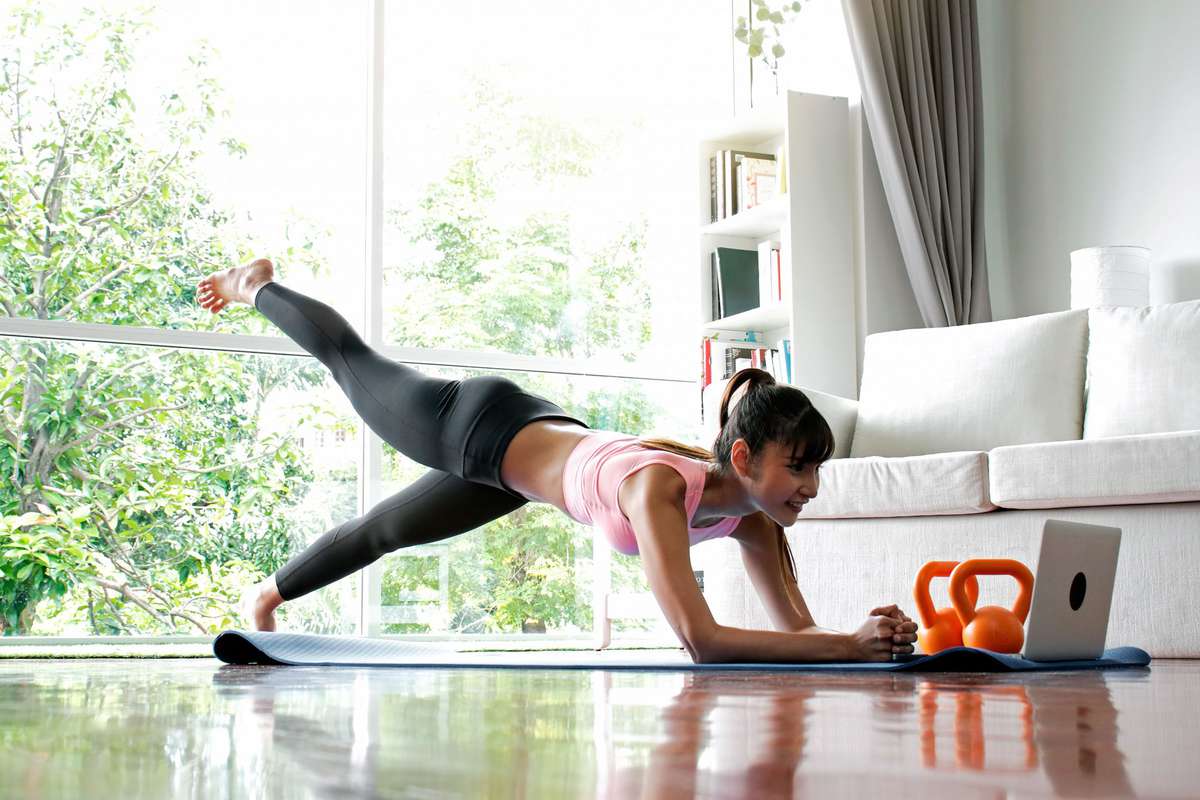If you’ve ever taken a Pilates, barre, or yoga class, there’s a decent chance you’ve heard an instructor talk about strengthening your muscles while lengthening them at the same time, resulting in a longer, leaner body shape. In some cases, promises of a dancer-like body are what attracts people to these types of workouts, especially if studios and instructors advertise using “long and lean” language.
But increasingly, trainers and fitness instructors are being vocal about the fact that creating a longer, leaner body through workouts is physically impossible. Here’s what they want you to know.
Where did “long, lean lines” come from?
This myth is pervasive in a variety of areas of fitness, but perhaps none is as rife with “long, lean” language as Pilates. “My hunch is that it began when Joseph Pilates came to New York City in the 1920s and opened a studio that shared an address with the New York City Ballet,” explains Helen Phelan, a body-neutral Pilates instructor and founder of Helen Phelan Studio. As a result, the creator of Pilates started working with ballet dancers — people who were genetically slim and required them to maintain that look for their profession.
Plus, there’s the fact that many former dancers become Pilates and barre instructors, which sort of feeds the idea that people who do these types of exercise will start to look like the traditional dancer ideal. This is one of the reasons it’s so important to support and lift up teachers in the fitness industry who may not fit into the traditional mold of what an instructor “should” look like. That’s part of why Corinne Wainer, founder of the Shakti Barre App (launching January 1, presale here), has committed to hiring a widely diverse group of instructors. Still, there’s a high probability that your fitness teachers come from an athletic background of some sort, she says, which can affect perception of what a person who exercises “should” look like.
But there’s also more to it than just the influence of the dance world. “It also just comes from society in general, where for a long time, the ideal for women has been this long, lean physique,” says Stephanie Rondeau, MS, ATC, CSCS, a certified health coach and trainer. “We see it in the fashion world and in Hollywood, and I think that is just what so many women strive for.”
Problem is, some people will never achieve long, lean lines.
No matter what type of exercise routine they do. And that’s 100 percent okay.
“To put it bluntly, it is physically impossible to change the length of your muscles through training,” Rondeau explains. This is because muscles have two points, where they attach to bones through tendons. Those two points are fixed, and can’t be moved, so creating “length” in a muscle is not something that can happen without surgery.
Of course, exercise can change your body’s appearance. “You can change the look of your body through changes in body fat percentage and strength training to increase muscle size,” Rondeau says. Also, barre and other low-impact workouts make use of isometric movements, which are highly effective at strengthening muscle tissue and could result in more defined muscles. But even though muscles grow as they gain strength, you can’t manipulate the shape your muscles take on as they get stronger, Rondeau adds.
Also, not all bodies respond the same way when practicing the exact same nutrition and exercise plan, Phelan notes. So for example, someone who is already tall with long limbs may find that Pilates enhances their natural long body shape. But a person with shorter limbs is not going to suddenly become “longer” from any type of workout.
Sure, exercise could theoretically make you appear slightly longer and leaner than before if you lose body fat and develop more muscle tissue. But the bottom line? “Our genetic predisposition has a much bigger impact on our size and shape than any exercise program,” Phelan adds.
That’s why some fitness professionals are speaking out against the long, lean myth.
“Perpetuating this myth is so dangerous because it can cause women to go to extreme measures to reach an ideal that isn’t actually physically possible for them,” Rondeau says. “And not only is it physically dangerous, but the mental toll of constantly trying for something that is medically impossible is difficult for mental health as well.”
Luckily, people are starting to listen to fitness professionals who are vocal on this issue. When Phelan recently posted about this myth on her Instagram, she received her biggest response ever. “The fact that the comments were mostly from other fitness professionals was really reassuring. To know that other people in this industry agree that this is problematic and want to do something about it gives me a lot of hope for the evolution of the wellness industry,” she says.
To be clear, Phelan doesn’t judge or shame anyone with a desire to lose weight. “It's completely normal in a world that values thin bodies above all others, and I find myself struggling with this pull still all the time.” But she also says there’s a shift happening in the fitness world from body-shaming to body-celebrating — and these shifts take time. “But it's really exciting to see the pushback against the traditional outlook that presents exercise as a way to erase food instead of feel great in your body.”
So, what can you do if you want to move past the idea of exercising for long, lean lines?
Sit with any disappointment you're feeling. It’s normal to feel bummed when you learn that what you’ve been told by fitness marketing isn’t actually true. “Body acceptance is a tough, non-linear journey, so naturally there is going to be some grief and disappointment in the beginning when we realize that we can't control our bodies in the way we’ve been sold — at least without majorly sacrificing our quality of life,” Phelan says.
Think about what your goals really are. “If your goal is to get toned, or to get long, lean lines, I encourage you to check in with yourself every single day and ask yourself, why?” Wainer says. “And if you're ever in a moment where it borders on an unhealthy perspective, maybe give yourself a break, put the weights down, go for a run, do some yoga. There’s no need to force a round peg in a square hole, especially if your mental health is sacrificed in trying to achieve these things.”
Consider the other benefits of exercise. “Even if that long, lean aesthetic isn’t possible, you can still see significant physical changes,” Rondeau points out. “Increasing strength of muscles and decreasing body fat will increase the appearance of muscle tone, and although you can’t lengthen your muscles, increasing the visibility of muscle creates a leaner look that many people strive for.”
At the same time, there are a lot of other reasons to exercise, Rondeau says: cardiovascular benefits, energy improvement, immune system support, and quality of life. “These are reasons to continue a fitness program even without aesthetic progress.”
It’s also important to shift our view of exercise from doing it as punishment to doing it because it’s a privilege, Phelan says. “If you're able to exercise and move freely, that's a gift, and it's wasted when we're caught up in tearing ourselves down in the mirror the whole time.”
Listen closely and seek out instructors who don’t body shame. “I encourage folks to really listen to how their teachers are speaking to them and what the brands that they pay for are saying to them,” Wainer says.
The whole “bikini body” thing is obvious to spot, but sometimes body-shaming isn’t as blatant. “If an instructor cues in a way that makes you feel bad about your body as it is, they're missing the point, and are likely stuck in a diet culture loop themselves,” Phelan says. What does that look like in real life? Hinting at “earning” food through exercise or “making up for” an indulgence are big red flags, as are cues like “this move eliminates those pesky love handles.”
And unfortunately, the whole “long, lean lines” thing is so normalized that your favorite fitness instructor might not even know that what they’re saying is problematic, Phelan says. “If you feel comfortable, rather than just boycotting their class, I encourage you to make a bigger impact by having a frank chat with your instructor about how unhelpful that mindset is, and asking them to be more mindful about the way they try to motivate or explain exercises.”
Source: Read Full Article



